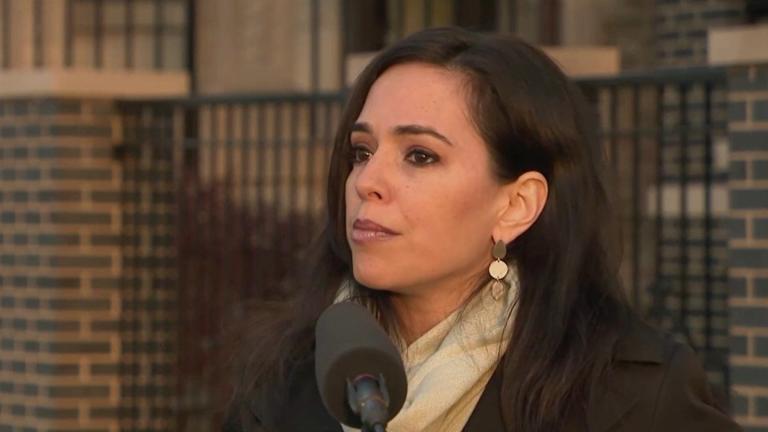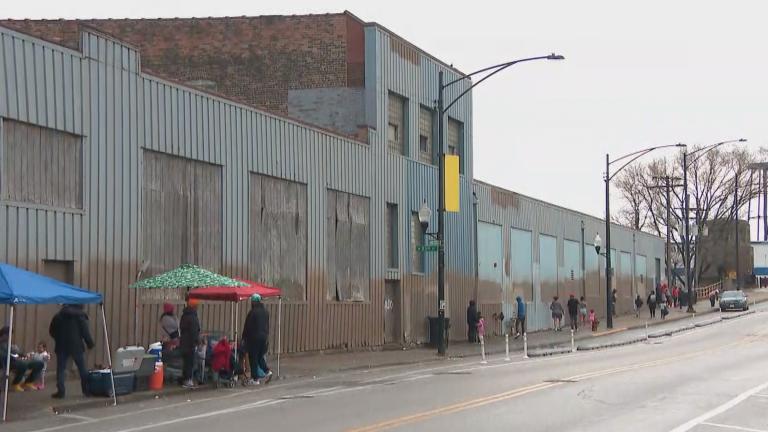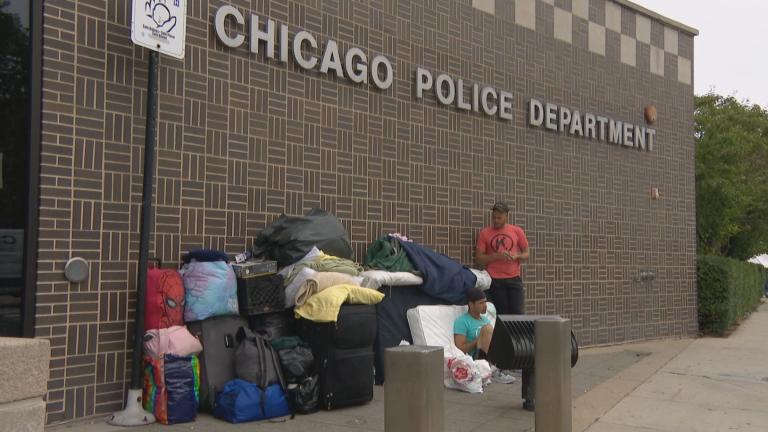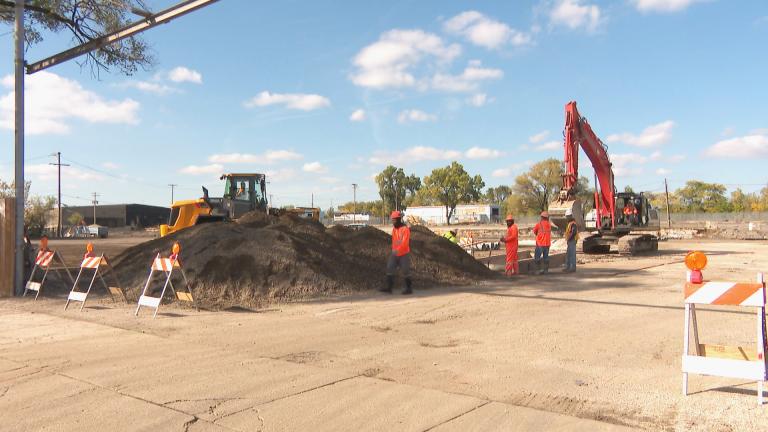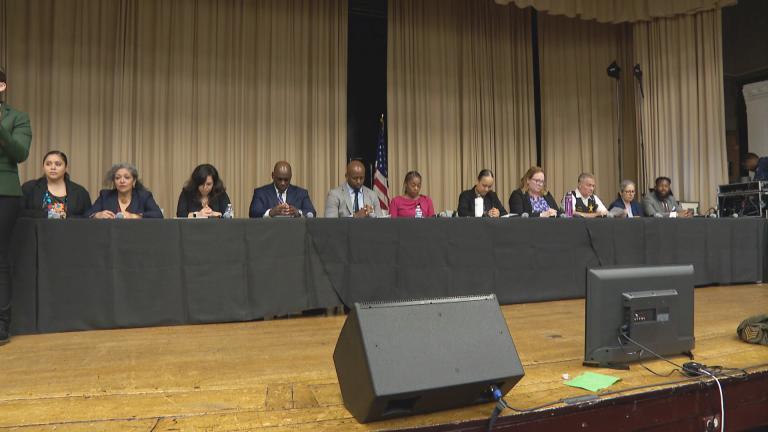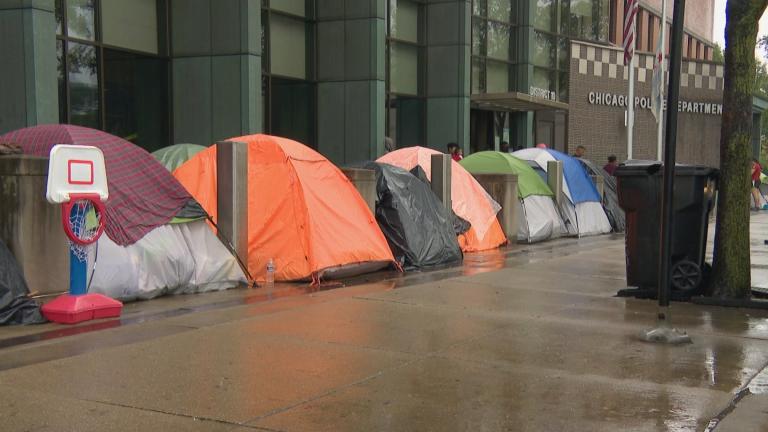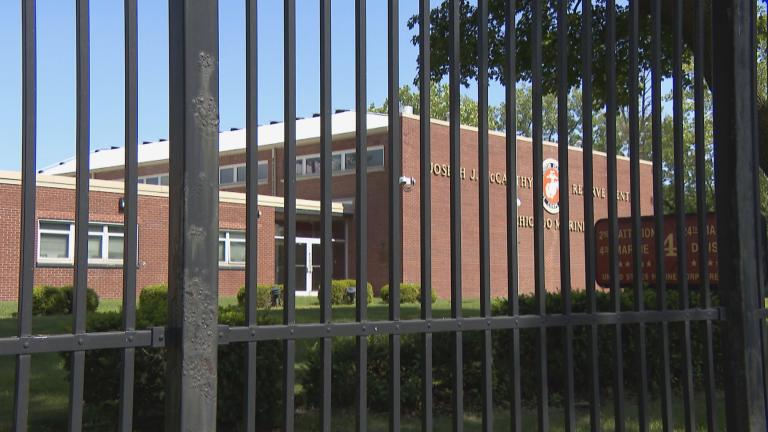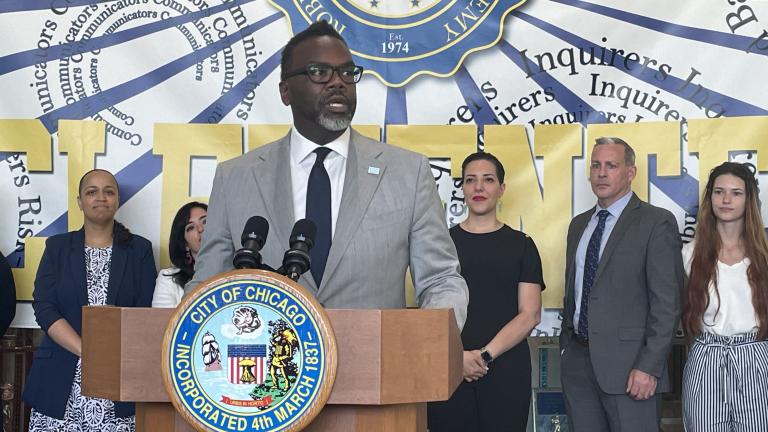Since Mayor Brandon Johnson took office, Cristina Pacione-Zayas has served as his first deputy chief of staff, charged with overseeing the city’s response to the arrival of nearly 38,500 migrants from the southern border.
Cristina Pacione-Zayas
Twenty-seven people were allowed to stay after they presented evidence that they had applied for public benefits that will make it possible for them to secure more permanent housing. Four others were allowed to stay because they are pregnant or have a disability, officials said.
No one will be evicted from the city’s migrant shelter in Pilsen, where 10 cases of measles had been confirmed as of late Thursday night.
Illinois has laws to protect against gender discrimination in pay, but it can be difficult for workers to know whether there’s a pay discrepancy. That may be easier to figure out starting next year.
The new policy could mean more than 3,000 people will lose their beds in city shelters by early February, with the rest forced out by April.
Approximately 1,500 men, women and children are sleeping in thin tents outside police stations across the city, officials said.
A delegation of local leaders and community groups from Chicago who recently visited the southern border and Texas cities discuss their trip and the lessons they brought home.
More than 19,000 people have been sent to Chicago from the southern border in the past 15 months. The city is awaiting test results before finalizing a decision to build a massive “winterized base camp” in Brighton Park.
Many furious residents urged Mayor Brandon Johnson’s administration to scrap the proposal, while others vowed to protect and care for Chicago’s newest residents.
More than 3,567 migrants are living in police stations across the city and at O’Hare International Airport with another 11,043 migrants living in city shelters as of Friday, according to city data.
“Chicago is a place strong enough to welcome and embrace newcomers while honoring our commitments to those who are already here, especially those who have long suffered disinvestment,” Mayor Brandon Johnson said.
Officials are still scouting locations for the massive tents, which could shelter, feed and care for as many as 1,000 migrants in a single location.
Ald. Pat Dowell called on Mayor Brandon Johnson to center the need of Black Chicagoans and warned that every bus that arrives “is eating away at the goodwill of the people of the city of Chicago.”
The cost of caring for the migrants through the end of the year is now estimated to reach $345 million, according to updated financial projections shared by Cristina Pacione Zayas, the mayor’s first deputy chief of staff. Three weeks ago, those costs were pegged at $302 million, according to city data.
The number of migrants living at police stations and O’Hare rose 28% between Aug. 18 and Friday. All are waiting for space to open up in one of 15 city shelters, which housed more than 6,500 migrants as of Friday, according to city data.
Despite what city officials called an “all hands on deck” approach, the number of migrants still being forced to sleep on floors at police stations and O’Hare International Airport has grown more than 45% in the past three weeks.

